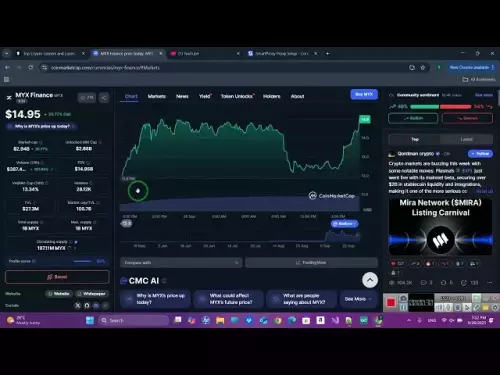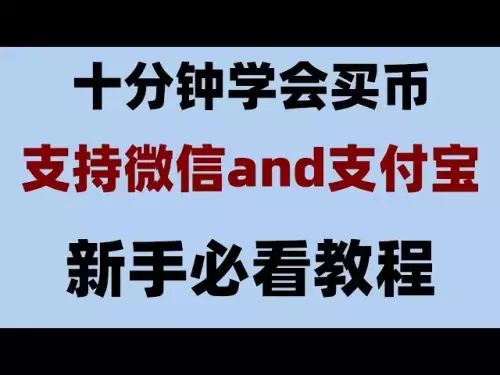-
 bitcoin
bitcoin $109547.008142 USD
0.04% -
 ethereum
ethereum $4011.838726 USD
-0.05% -
 tether
tether $1.000402 USD
-0.01% -
 xrp
xrp $2.798606 USD
0.88% -
 bnb
bnb $970.877944 USD
1.39% -
 solana
solana $202.237275 USD
-0.95% -
 usd-coin
usd-coin $0.999673 USD
0.00% -
 dogecoin
dogecoin $0.229294 USD
-1.15% -
 tron
tron $0.336370 USD
-0.45% -
 cardano
cardano $0.777260 USD
-1.66% -
 hyperliquid
hyperliquid $45.503019 USD
1.73% -
 ethena-usde
ethena-usde $1.000362 USD
0.01% -
 chainlink
chainlink $20.785303 USD
-1.10% -
 avalanche
avalanche $28.755822 USD
-0.11% -
 stellar
stellar $0.358303 USD
-0.48%
Can WMA predict trend reversals? How to use it in combination with other indicators?
WMA, a sensitive indicator, helps predict trend reversals in crypto by giving more weight to recent prices, enhancing trading strategies when combined with RSI and MACD.
May 22, 2025 at 01:50 am
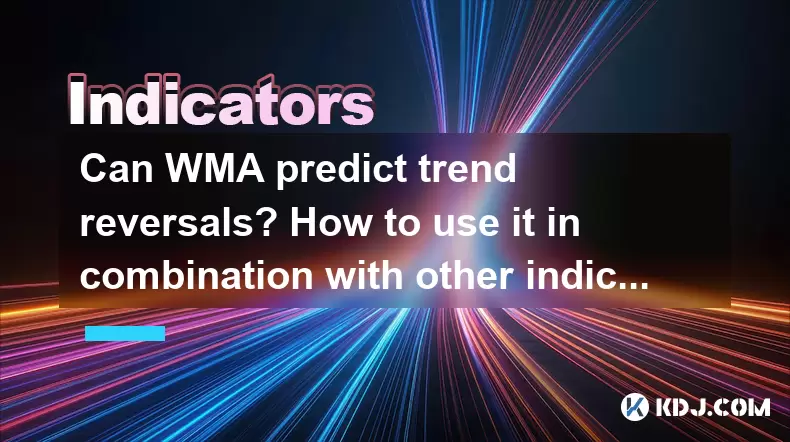
Introduction to WMA and Its Role in Predicting Trend Reversals
The Weighted Moving Average (WMA) is a popular technical indicator used by traders in the cryptocurrency market to smooth out price data and identify potential trend reversals. Unlike the Simple Moving Average (SMA), which assigns equal weight to all values, the WMA gives more importance to recent prices, making it more responsive to new information. This feature makes it particularly useful for traders looking to predict trend reversals in the fast-paced crypto market.
In this article, we will explore how the WMA can be used to predict trend reversals and how it can be effectively combined with other technical indicators to enhance trading strategies. We will delve into the mechanics of the WMA, its advantages, and practical examples of its application in real trading scenarios.
Understanding the Weighted Moving Average
The WMA calculates the average of a set of data points, but unlike the SMA, it multiplies each data point by a weight that increases linearly. The formula for the WMA is as follows:
[ \text{WMA} = \frac{\sum_{i=1}^{n} w_i \cdot Pi}{\sum{i=1}^{n} w_i} ]
Where:
- ( n ) is the number of periods
- ( P_i ) is the price at period ( i )
- ( w_i ) is the weight assigned to the price at period ( i ), with ( w_i = i )
The key advantage of the WMA is its sensitivity to recent price movements. This makes it a valuable tool for traders who need to react quickly to changes in market trends. By giving more weight to recent prices, the WMA can signal a potential trend reversal before other types of moving averages.
Using WMA to Predict Trend Reversals
To use the WMA for predicting trend reversals, traders typically look for specific patterns and signals. One common method is to observe the crossover of two WMAs with different periods. For example, a trader might use a short-term WMA (e.g., 10-day) and a long-term WMA (e.g., 50-day).
- When the short-term WMA crosses above the long-term WMA, it may signal a bullish trend reversal, indicating that the price is likely to start an upward trend.
- When the short-term WMA crosses below the long-term WMA, it may signal a bearish trend reversal, indicating that the price is likely to start a downward trend.
Another approach is to look for divergences between the WMA and the price action. If the price reaches a new high but the WMA does not follow suit, it could indicate a weakening trend and a potential reversal.
Combining WMA with Other Indicators
While the WMA can be a powerful tool on its own, its effectiveness can be significantly enhanced when combined with other technical indicators. Here are some popular combinations:
WMA and Relative Strength Index (RSI)
The Relative Strength Index (RSI) is a momentum oscillator that measures the speed and change of price movements. When combined with the WMA, it can help confirm trend reversals.
- If the WMA indicates a potential bullish reversal and the RSI is below 30 (indicating an oversold condition), it may be a strong signal to buy.
- If the WMA indicates a potential bearish reversal and the RSI is above 70 (indicating an overbought condition), it may be a strong signal to sell.
WMA and Moving Average Convergence Divergence (MACD)
The Moving Average Convergence Divergence (MACD) is another trend-following momentum indicator. When used with the WMA, it can provide additional confirmation of trend reversals.
- If the WMA signals a bullish reversal and the MACD line crosses above the signal line, it can confirm the upward trend.
- If the WMA signals a bearish reversal and the MACD line crosses below the signal line, it can confirm the downward trend.
WMA and Bollinger Bands
Bollinger Bands consist of a middle band being an SMA, and two outer bands that are standard deviations away from the middle band. Combining WMA with Bollinger Bands can help identify potential reversal points.
- If the WMA is near the lower Bollinger Band and starts to turn upwards, it may signal a bullish reversal.
- If the WMA is near the upper Bollinger Band and starts to turn downwards, it may signal a bearish reversal.
Practical Example of Using WMA in Trading
Let's consider a practical example of using the WMA to predict a trend reversal in the Bitcoin market. Suppose we are using a 10-day WMA and a 50-day WMA.
- Step-by-step process:
- Monitor the Bitcoin price chart and plot both the 10-day and 50-day WMAs.
- Observe the crossover points between the two WMAs. If the 10-day WMA crosses above the 50-day WMA, it may signal a bullish reversal.
- Confirm the signal using another indicator, such as the RSI. If the RSI is below 30, it strengthens the bullish signal.
- Enter a long position based on the confirmed signal, setting appropriate stop-loss and take-profit levels.
In this example, the WMA crossover, combined with the RSI, provides a strong signal for a potential trend reversal, allowing the trader to make an informed decision.
Setting Up WMA in Trading Platforms
To effectively use the WMA in your trading strategy, you need to know how to set it up in your trading platform. Here's a detailed guide for setting up the WMA in popular trading platforms like MetaTrader 4 (MT4) and TradingView:
Setting Up WMA in MetaTrader 4 (MT4)
- Open your MT4 platform and select the chart where you want to apply the WMA.
- Go to the 'Insert' menu, then navigate to 'Indicators', and select 'Trend'.
- Choose 'Moving Average' from the list of trend indicators.
- In the settings window, change the 'Method' to 'Linear Weighted'.
- Set the period (e.g., 10 or 50) according to your strategy.
- Click 'OK' to apply the WMA to your chart.
Setting Up WMA in TradingView
- Open your TradingView platform and select the chart where you want to apply the WMA.
- Click on the 'Indicators' button at the top of the chart.
- Search for 'WMA' in the search bar and select 'Weighted Moving Average'.
- In the settings panel, set the length (e.g., 10 or 50) according to your strategy.
- Click 'Apply' to add the WMA to your chart.
Frequently Asked Questions
Q1: Can WMA be used effectively on all timeframes?Yes, the WMA can be used on various timeframes, from short-term (e.g., 1-minute charts) to long-term (e.g., daily charts). However, its effectiveness may vary depending on the timeframe and the specific trading strategy.
Q2: Is WMA more suitable for volatile markets like cryptocurrencies?The WMA's sensitivity to recent price movements makes it particularly useful in volatile markets like cryptocurrencies, where quick reactions to price changes are often necessary.
Q3: How does WMA compare to other types of moving averages in terms of lag?The WMA is less lagging compared to the Simple Moving Average (SMA) because it gives more weight to recent prices. However, it may still lag behind more advanced indicators like the Exponential Moving Average (EMA).
Q4: Can WMA be used for both short-term and long-term trading strategies?Yes, the WMA can be adapted for both short-term and long-term trading strategies by adjusting the period length. Shorter periods are more suitable for short-term trading, while longer periods are better for long-term trends.
Disclaimer:info@kdj.com
The information provided is not trading advice. kdj.com does not assume any responsibility for any investments made based on the information provided in this article. Cryptocurrencies are highly volatile and it is highly recommended that you invest with caution after thorough research!
If you believe that the content used on this website infringes your copyright, please contact us immediately (info@kdj.com) and we will delete it promptly.
- Cheap AI Coding Revolution: Gemini 2.5 and the 1 Million Token Dream
- 2025-09-28 20:25:16
- Tether, Circle, and Competition: A Stablecoin Showdown in 2025
- 2025-09-28 20:25:16
- Layer Brett vs. Cardano: A Price Prediction Face-Off for 2025
- 2025-09-28 20:30:03
- Crypto Presale Alert: Unveiling the 500x Potential New Coins of 2025
- 2025-09-28 20:30:03
- Bitcoin Volatility, Whales, and Market Stir: What's the Deal?
- 2025-09-28 20:30:03
- XRP, Ripple, Price Prediction: Decoding the Crypto Crystal Ball
- 2025-09-28 21:05:12
Related knowledge

What is a tower bottom candlestick pattern? Does it have a high success rate?
Sep 22,2025 at 07:18am
Tower Bottom Candlestick Pattern Explained1. The tower bottom candlestick pattern is a reversal formation that typically appears at the end of a downt...

What is a black hole pattern in the MACD indicator? Is it a cause for concern?
Sep 21,2025 at 06:54pm
Bitcoin's Role in Decentralized Finance1. Bitcoin remains the cornerstone of decentralized finance, serving as a benchmark for value and security acro...

How can I use the psychological line (PSY) to determine market sentiment?
Sep 17,2025 at 02:19pm
Understanding the Psychological Line (PSY) in Cryptocurrency TradingThe Psychological Line, commonly referred to as PSY, is a momentum oscillator used...
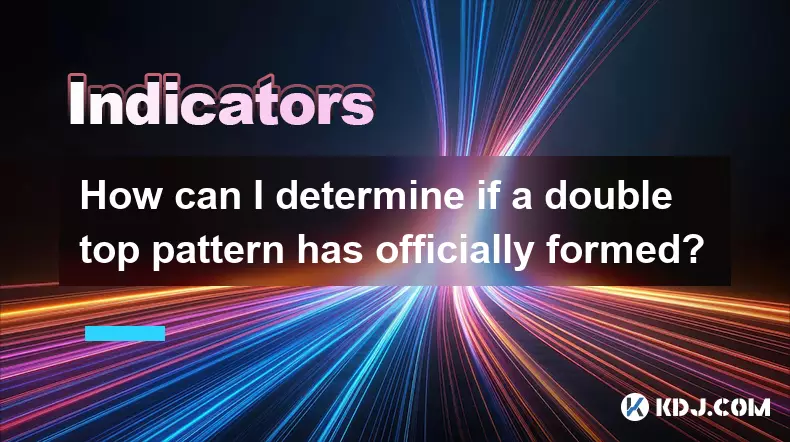
How can I determine if a double top pattern has officially formed?
Sep 21,2025 at 03:18am
Understanding the Structure of a Double Top Pattern1. A double top pattern consists of two distinct peaks that reach approximately the same price leve...
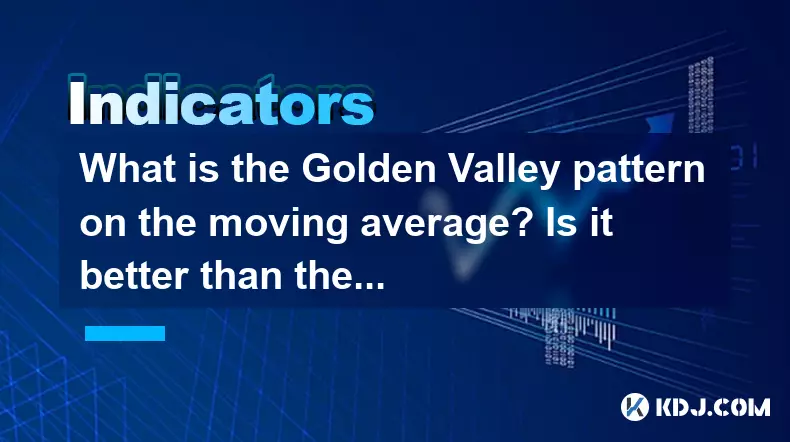
What is the Golden Valley pattern on the moving average? Is it better than the Silver Valley pattern?
Sep 21,2025 at 02:54pm
Understanding the Golden Valley Pattern in Moving Averages1. The Golden Valley pattern is a technical formation observed in cryptocurrency price chart...

What does a death cross of the RSI in the strong zone (above 50) mean?
Sep 17,2025 at 10:54pm
Understanding the Death Cross in RSI Context1. The term 'death cross' is traditionally associated with moving averages, where a short-term average cro...

What is a tower bottom candlestick pattern? Does it have a high success rate?
Sep 22,2025 at 07:18am
Tower Bottom Candlestick Pattern Explained1. The tower bottom candlestick pattern is a reversal formation that typically appears at the end of a downt...

What is a black hole pattern in the MACD indicator? Is it a cause for concern?
Sep 21,2025 at 06:54pm
Bitcoin's Role in Decentralized Finance1. Bitcoin remains the cornerstone of decentralized finance, serving as a benchmark for value and security acro...

How can I use the psychological line (PSY) to determine market sentiment?
Sep 17,2025 at 02:19pm
Understanding the Psychological Line (PSY) in Cryptocurrency TradingThe Psychological Line, commonly referred to as PSY, is a momentum oscillator used...

How can I determine if a double top pattern has officially formed?
Sep 21,2025 at 03:18am
Understanding the Structure of a Double Top Pattern1. A double top pattern consists of two distinct peaks that reach approximately the same price leve...

What is the Golden Valley pattern on the moving average? Is it better than the Silver Valley pattern?
Sep 21,2025 at 02:54pm
Understanding the Golden Valley Pattern in Moving Averages1. The Golden Valley pattern is a technical formation observed in cryptocurrency price chart...

What does a death cross of the RSI in the strong zone (above 50) mean?
Sep 17,2025 at 10:54pm
Understanding the Death Cross in RSI Context1. The term 'death cross' is traditionally associated with moving averages, where a short-term average cro...
See all articles






















